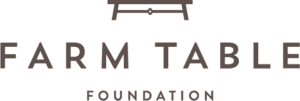
AMERY, WISCONSIN 54001
Copyright Farm Table Foundation 2022. All Rights Reserved. Find us on Facebook

This website is currently under construction. We invite you to visit again in the near future as we announce events and future strategies.

AMERY, WISCONSIN 54001
Copyright Farm Table Foundation 2022. All Rights Reserved. Find us on Facebook